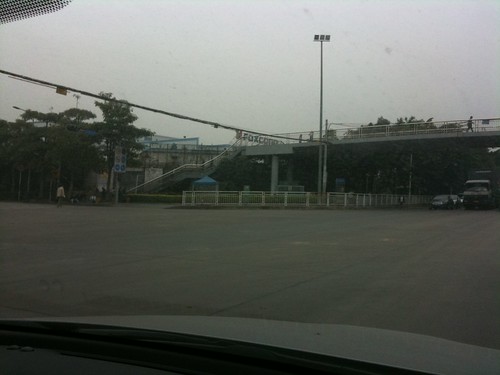November 2025 introduction – (28) in a state edition
I am now at issue 28, or as a bingo caller would put it ‘in a state’. In a state or in a right state usually carried a sense of trepidation in Irish households – it usually describes an odd emotion exhibited by the person being discussed.
It is often associated with stupor, shock, chaos, agitation or anxiety.
“There was a car crash just up the road; thankfully no one was injured but the driver was in a state.”
It could also be used as a tone of disapproval for a person’s grooming and outfit.
In Cantonese 28 has positive connotations and is interpreted as “easy to be rich” or “easy prosperity”. The pronunciation of ‘2’ (yi) sounds like ‘easy’ and ‘8’ (ba) sounds like ‘prosper’ (fa).
This edition’s soundtrack is from The Hideout, a former boutique that used to be based in Golden Square and specialised in Japanese streetwear brands like Neighborhood, A Bathing Ape, WTAPs etc. Each Christmas time they used to have this mixtape put together by Andrew Hale on heavy rotation. Since then it’s become a seasonal go to in Chez Carroll.
( Hale played keyboards for Sade. He was a member of Japanese experimental supergroup Water Melon (ウォーター・メロン) alongside Gota Yashiki, KUDO, Toshio Nakanishi aka Tycoon To$h, and provided soundtracks for computer games and films.) Ok, I will stop nerding out now.
Now we have a sound track, let’s get into it.
New reader?
If this is the first newsletter, welcome! You can find my regular writings here and more about me here.

Things I’ve written.
- Mico + more things – Mircrosoft’s AI companion has a bit of Clippy and a bit of Willo the Wisp (who was the brand character of British Gas) to it. But as a fluent object it’s not bad.
- Sixt Halloween ad + more stuff – a selection of great creative from Anthropic, Sixt, Apple and Life 360.
- Toyota FJ Land Cruiser + more stuff – Toyota’s genius move to launch a smaller footprint Land Cruiser with fantastic utilitarian details in the design. The downside is that we are unlikely to see any of them in the UK.
Books that I have read.
- I have been reading my Dad’s copies of Gerald Seymour’s books back when I was a child. My friend Ian introduced me to his later works and character Jonas Merrick. Crocodile Hunter explains the back story why a caravan-loving middle-aged ‘underachieving’ MI5 officer had been given so much latitude. Merrick then becomes the metaphorical crocodile hunter of the title in a game of wits with an experienced veteran of the Syrian civil war and Iraq conflicts in the environs of Canterbury.
- 1929: The Inside Story of The Greatest Crash in Wall Street History by Andrew Ross Sorkin was a decade in the writing following on from his previous book Too Big To Fail about the 2008 financial crisis. Sorkin makes the story readable despite the book being chunky enough to be a door stop. He does so by telling the stories of the individuals involved. In doing so he also challenges many of our learned assumptions about the crisis. The timing of its release while concerns turn towards an AI driven stock market bubble gives it addition relevance.
- As I was reading this article in the FT How this 31-year-old made $250mn in 30 months | FT – oil trading with Russian oil. A few things crossed my mind. Amongst them being that it sounded like a pitch for prospective series two of McMafia. Will the protagonist fall out of a window from a Moscow skyscraper?
Things I have been inspired by.
I managed to spend some time with my long time colleague Calvin Wong on a stopover before he headed to Portugal for Web Summit.
It might be merely a rationalisation of my own biases, after the later part of the 2010s being a lull in the creative web. 2025 seems to be spawning more creative things built on the web. My current favourite is Radiooooo shocking brand name, but an amazing site. You can navigate a map of the world, click on a country and listen to music from that country. Not only that but can select whether you are open to fast, slow tempo songs or ‘weird’. My current favourites are Japanese, Thai and Cambodian pop of the 1960s.
The Impact of Visual Generative AI on Advertising Effectiveness by Hyesoo Lee, Vilma Todri, Panagiotis Adamopoulos & Anindya Ghose is an early piece of research on the effectiveness of generative AI created visual adverts. The research had a number of findings:
- When visual gen AI was used to modify existing ads originally created by human experts, its performance fell short of the original ads.
- When visual gen AI was used to create ads from scratch, those ads outperformed both the human expert–created and gen AI-modified ads.
- When everything including the product package created by gen AI in the advertisement was associated with higher ad effectiveness.
- But consumers still aren’t fans, when gen AI involvement in ad generation is disclosed, advertisement effectiveness decreases. Disclosure is becoming a legal requirement in many markets and cramping ad effectiveness.
These oddities could be down to how well their models performed with modified prompts, rather than a repudiation of human effort. And all of these nuances are likely to change as models are improved. This doesn’t mean that generative AI is the best advertising and packaging designers. But it does depend a lot on the aesthetic / taste of the human prompter even more.
Verity Relationship Intelligence newly released annual report for 2025 highlighted a number of interesting take-outs from its research. The things that stood out to me were:
- 20% growth every year since 2021 for client complaints about efficiency.
- 58% of what clients link efficiency to is non-operational. Efficiency,
is a partnership quality rather than a production metric – kind of like the idea of synchronicity. Increasing ‘juniorisation’ of teams, hybrid working, and smaller budgets have created an operational squeeze, while automation and rigid systems stripped back the human touch that clients value most. - The chasm opening up between rising client satisfaction (currently 8.0) and declining team satisfaction (7.3) in their agency team threatens work quality, client retention and employee churn. The problems stem from agency culture: little agency leadership, recognition or care.
Chart of the month.
Ipsos did a 30-country survey to answer the question ‘Is Life Getting Better? comparing attitudes to 1975 versus 2025. Nostalgia is a great standby for trend reports as the past is constantly been repackaged.
What the Ipsos report hints at is widespread dissatisfaction with current political and economic systems in Europe, Latin America, North America, South Africa and many Asian countries. Part of this maybe down to what Ipsos termed ‘the middle class in crisis‘. The contrary outlier was South Korea.
As tough as the Korean economy is now, the country has made a huge step change over the past five decades: shaking off a military dictatorship and undergoing massive economic development.
The UK’s intense desire for nostalgia hints at a wider unease, what The New Statesman called the Netflixification of politics.
Things I have watched.
Apple TV+ have followed up Slow Horses this season with a second adaptation of a Mick Herron novel Down Cemetery Road. Emma Thompson is the protagonist unearthing a very British conspiracy bought about by a suspicious fire and abducted child in Oxford. It is made to the same high standard as Slow Horses and I have found it to be must-see TV.
Dominic Cooper plays a blinder in Apple TV+ series The Last Frontier. The tangled storyline of conspiracy, paranoia and secrets reminded me of vintage TV series like 24 and The X Files. What separates The Last Frontier is the detail, its scenic shots of an Alaskan winter are beautiful.
Useful tools.
Koolyz is a directory / portal of online tools that I found via Matt Muir’s excellent newsletter. It helps on all the finicky tasks like compressing PDFs or moving an image from one format to another. It is also worth looking at The Creative Cheat Sheet for visual inspiration, writing and presentation building tools.
I got to try out Hubspot‘s AEO grader here. It is a good starting point to understand how ChatGPT, Perplexity and Google Gemini ‘see’ and ‘understand’ your brand.
Finally LUMAscapes is a series of charts by LUMA that give you the main players in agencies, AI, OOH, martech and more categories as convenient PDFs.
The sales pitch.
I am currently working on a brand and creative strategy engagement at Google’s internal creative agency. I am now taking bookings for strategic engagements from the start of 2026 – keep me in mind; or get in touch for discussions on permanent roles. Contact me here.

More on what I have done here.

The End.
Ok this is the end of my November 2025 newsletter, I hope to see you all back here again in a month. Be excellent to each other and get planning for Christmas. As an additional treat here is a link to my Mam’s recipe for Christmas cake – we usually make one in November. It is then allowed to sit prior to serving at Christmas. If looked after correctly it can keep for several months. I grew up with and love fruit cake but your mileage may vary.
Don’t forget to share if you found it useful, interesting or insightful.
Get in touch and if you find it of use, this is now appearing on Substack as well as LinkedIn.















